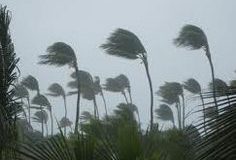
The plumeria, those beautiful exotic tropical flowers also known as frangipani, is grown worldwide. To maintain this plant’s overall beauty requires the gardener to provide tender loving care not only to the flowers, but also to the leaves. The gardener needs to know of potential problems that can develop as well as how to correct these problems through proper plumeria care.
Plumerias, frangipani, are grown all over the world beginning in its first discovered natural habitat of the Caribbean Islands, Central America, Mexico and Northern South America. These beautiful tropical plants are also grown in American Samoa, Australia, Bahamas, Barbados, Cambodia, Canada, Cook Islands, Ethiopia, Fiji, French Polynesia (Tahiti), Germany, Guam, India, Indonesia (Bali), Italy (Sicily), Sri Lanka, Thailand, Taiwan, and the United States to name just a few.
Over the last twenty-five years more and more international travelers are discovering plumeria plants, frangipani. Many travelers to Hawaii and Tahiti, for example, are greeted upon their arrival with a traditional island lei. These leis are a necklace of stringed plumeria flowers that have an intoxicating fragrance. So overwhelming is the impression these flowers make on visitors to these tropical destinations that they often leave wearing a lei or bringing one back home as a gift for a loved one.
Even more dramatically, these visitors bring home a dream of growing plumeria plants in their own homes and yards, and creating a small tropical garden of paradise with plumeria flowers as the main attraction.
This dream requires some education about plumeria care outside their natural habitat of subtropical and tropical growing zones. Many of these new plumeria aficionados are very excited to learn that it is possible to create such a garden of paradise indoors and outdoors with proper plumeria care.
The overall aesthetic beauty of the plumeria plant involves caring for the leaves as well as the flowers. The leaves not only provide protection for the flowers from the winds, but they complete its overall tropical appearance.
One of the most common worldwide threats to plumeria plants is a fungus disease known as plumeria rust, Coleosporium domingese. An airborne pathogen causes the plumeria rust to spread rapidly from one plumeria plant to another.
Plumeria rust was first recorded on Plumeria alba on the Caribbean West Indies island of Guadeloupe in 1902. It later spread to and throughout Central America. Today it is found in many countries where plumeria plants are grown. The one important piece of good news is that plumeria rust does not affect the plant’s growth and flowering.
Some plumerias are more resistant to rust than others, including Plumeria obtusa ‘Singapore’ and ‘Mele Pa Bowman’ which are very resistant to rust.
The majority of infections are caused by airborne urediniospores that stick to leaves under wet or humid conditions. Urediniospores are thin-walled spores. These spores look like a balloon pinched in the middle, or an un-separated eight. As these spores germinate, the nuclei undergo karyogami, reproduction in fungi, and thereafter meiosis, cell division. They penetrate the leaf surface infecting the cells of leaves.
The symptoms of the disease start on the undersides of leaves that begin to show numerous tiny, raised, yellow-orange, powdery rust pustules. These pustules may emerge sparsely on the upper surface of heavily infected leaves. Even though the spores can be rubbed or wiped off the leaves, it doesn’t eliminate the infection.
Yellow spots become visible on the upper leaf surface, opposite to the infected sites on the lower surface. As lesions age, enlarge, and coalesce, these yellow areas develop into sunken, angular and grayish to brown spots. When leaves are severely diseased, they may dry, curl, become distorted, and fall off. Premature defoliation can at times result in complete loss of leaves.
To control plumeria rust one needs to act promptly at the first indications of rust spots. In treating infected leaves it is important to treat both sides of the leaves with a fungicide. It is helpful to add a surfactant to the fungicide solution to prevent the solution from running off the leaves. It is important to remove any and all infected leaves. Remove all fallen leaves as well as the pathogen can continue to survive on these leaves and become a source of new infections.
Further preventive steps include regulating the airflow around plumeria plants. It is an invitation for diseases and insects if plumeria plants are planted too close together.
To avoid this unsightly disease of plumeria rust, one should get good solid information from experienced and knowledgeable plumeria gardeners who have years of experience in growing frangipani. Their guidance can save you time, energy, and grief over the loss of a beautiful plumeria garden that has been overridden by plumeria rust or other harmful diseases. All of this can be prevented if one receives the voice of tried and tested information on how to successfully grow and properly care for frangipani.

Source by Bob Allen Walsh
 Vitamin Agent The Health & Naturalistic Source
Vitamin Agent The Health & Naturalistic Source





